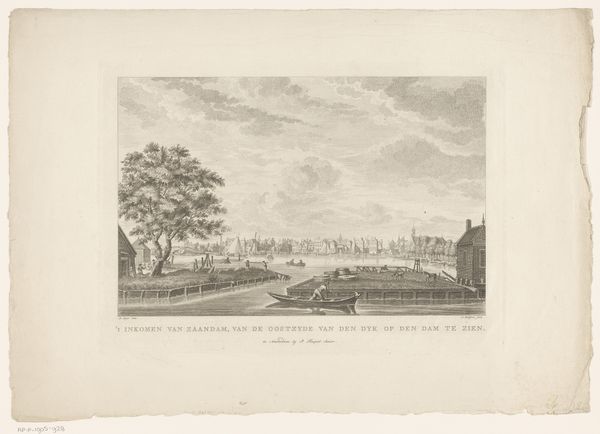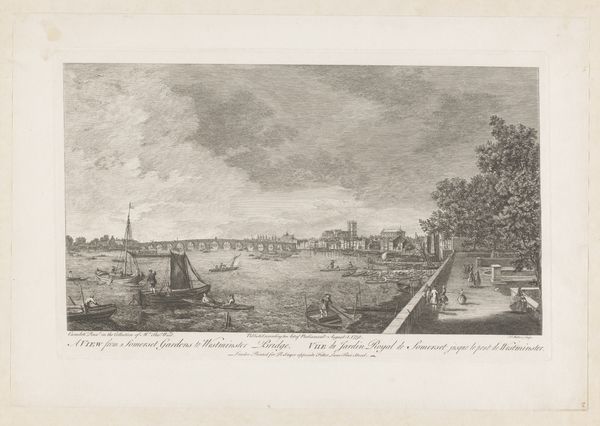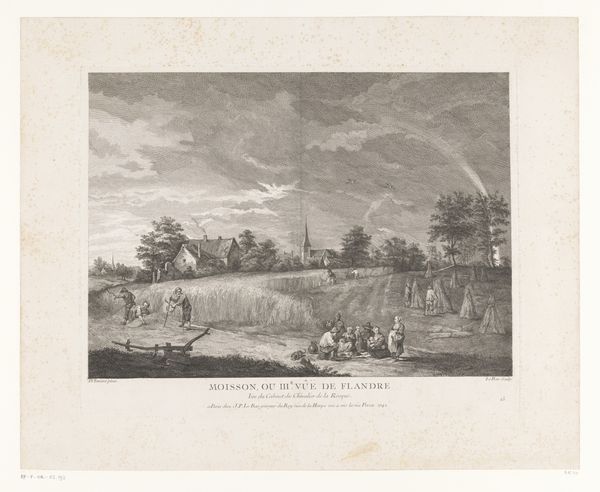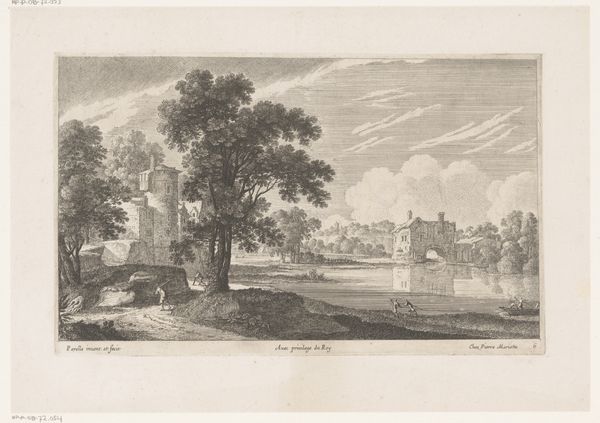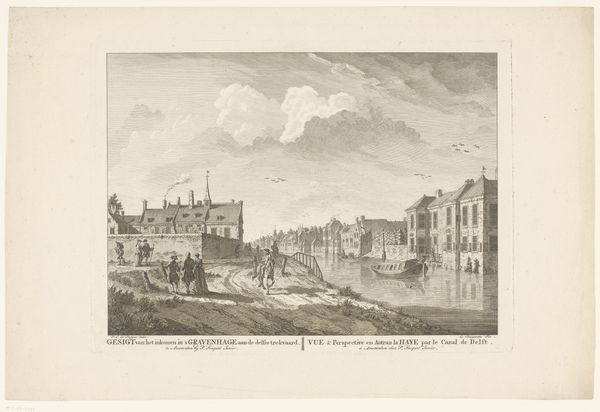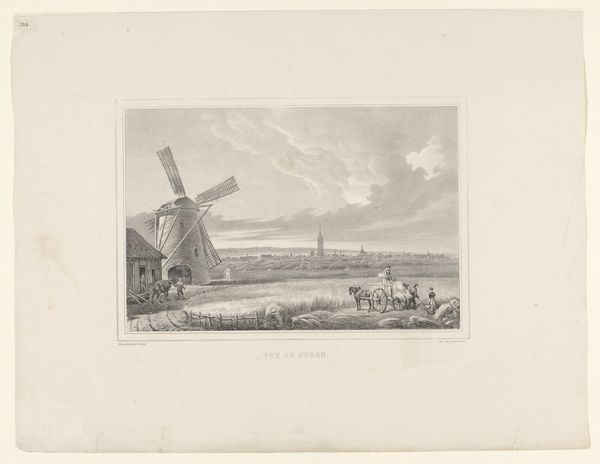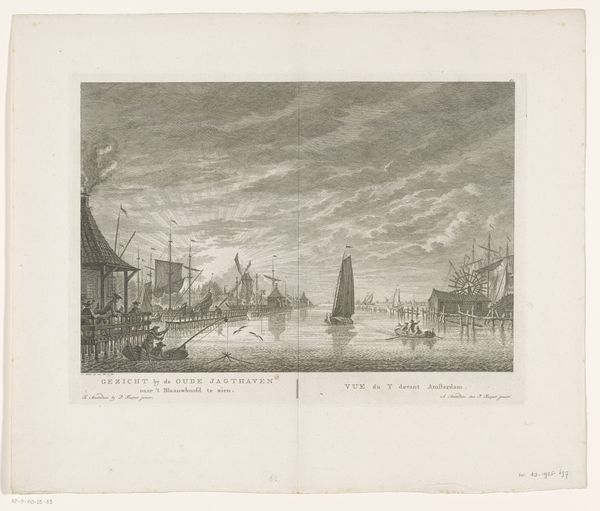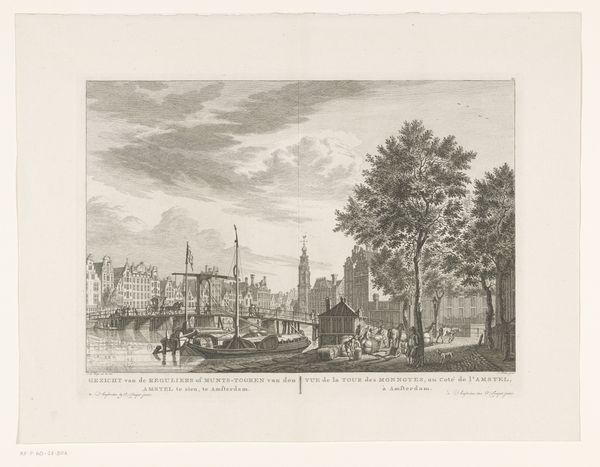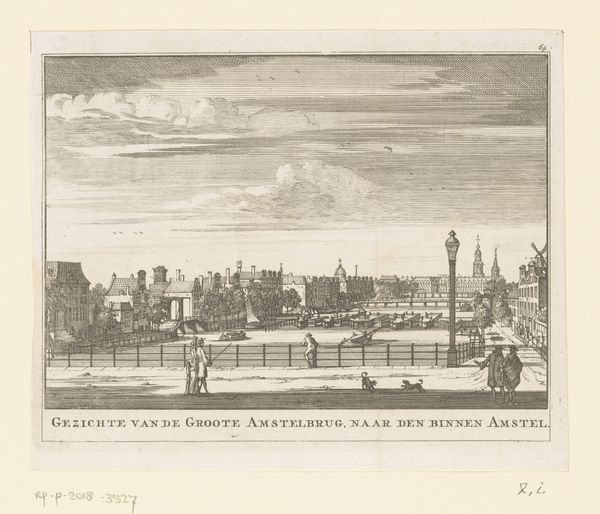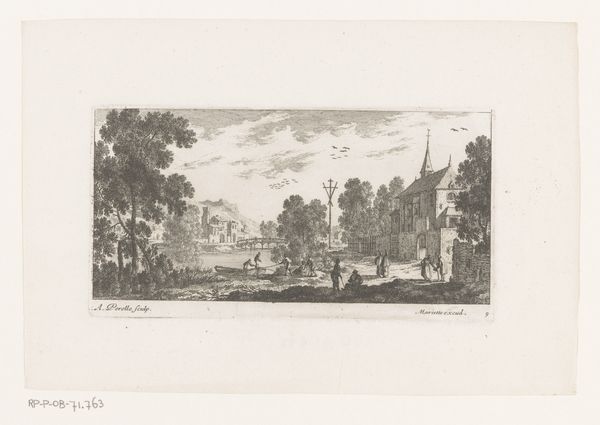
print, engraving
#
aged paper
#
dutch-golden-age
# print
#
old engraving style
#
landscape
#
cityscape
#
engraving
Dimensions: height 268 mm, width 370 mm
Copyright: Rijks Museum: Open Domain
Curator: I’m struck by the serenity of this image. The sepia tones lend it an air of looking back, of witnessing history. Editor: Indeed. We're looking at an engraving titled "Gezicht op Zaandam," or "View of Zaandam," which we attribute to Antoine Radigues. Its creation dates somewhere between 1731 and 1809, offering us a window into this Dutch cityscape. What I find fascinating is the meticulous craft involved. Look at the details etched into the aged paper; it speaks of laborious printing processes, the material realities of producing images in that era. Curator: And that’s precisely where it becomes evocative. The Dutch Golden Age witnessed unparalleled maritime trade, yet the lives of ordinary people—their labor, their environment—are often glossed over. The engraving brings forth that tension between national success and everyday reality, even with the apparent peace of the view. Editor: I see your point about national narratives. Consider the ships depicted here. They were instruments of both trade and possibly colonialism, impacting labor practices far beyond Zaandam. These materials - the wood, the canvas, the metal - each carry their own complex story of extraction, production and exchange. Curator: The sky too, has this feeling of transition and change as the clouds stretch far, reminding us of the ever-present forces of nature shaping human activity. In an era grappling with rapidly evolving markets, that sense of ephemerality would have resonated powerfully, affecting people across socio-economic strata. It presents not just the visible city but the felt experience of urban life in a world transformed by global trade. Editor: Exactly! And it goes to show how even an artwork focused on “high art” such as this landscape engages the work of craftsmanship while highlighting labor in the materials. Considering the time and social conditions it emerges from makes one consider if there is indeed a significant division between them. Curator: Yes, these considerations enhance our understanding. It allows us to approach art not merely as aesthetic objects, but as potent signifiers embedded within multifaceted, and sometimes difficult, realities. Editor: Ultimately, looking at art through the lens of its production and labor, it reveals overlooked stories embedded in the lines of engravings. It changes how we see everything!
Comments
No comments
Be the first to comment and join the conversation on the ultimate creative platform.
